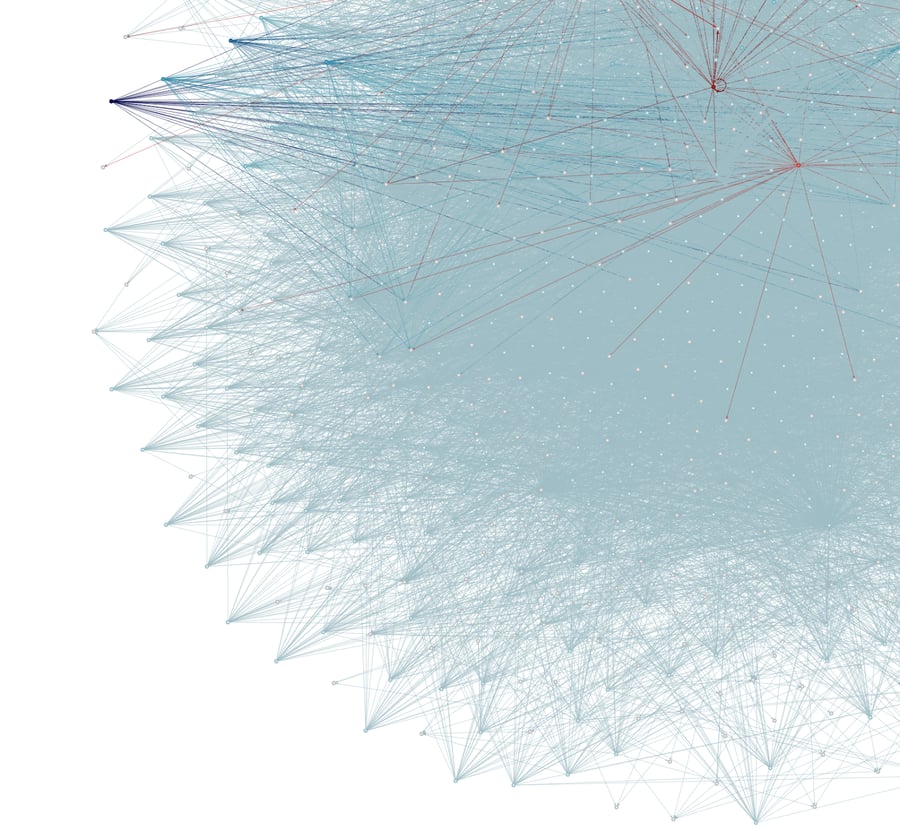Applying Data Science Expertise to Komodo’s Platform To Answer Novel Healthcare Questions

Some medical questions are as unique as the patients who ask them. Rare diseases can present especially challenging cases for providers, who often have to rely on scant research and best guesses to treat their patients. These diseases are also a challenge for industry leaders, whose datasets have limited linkability and an insufficient volume of closed claims data to deliver impactful insights. When a patient has two rare diseases, traditional data sources are wholly insufficient, often leading patients and advocacy groups to spearhead their own investigations.
A friend of mine is in a situation very much like this. He’s been diagnosed with two rare diseases: Primary Sclerosing Cholangitis (PSC), a liver disease that affects 0.007% of the population, and Hypertrophic Cardiomyopathy (HCM) a heart disease that affects 0.095% of the population. His doctors, having little published data on any overlap of these diseases, had guessed that they were mutually independent, meaning that a patient’s risk of having one disease remains the same as the general population after they are diagnosed with the other. After doing his own research though, my friend questioned if there might be more to the story. He reached out to me to see if Komodo might be able to help investigate.
As a data engineer, I often have to be creative in how I approach modeling and problem solving with patient journey data in order to find and surface existing trends that would otherwise be harder to elucidate. There are hundreds of different network analysis algorithms I can leverage to search for impactful and influential points, connections, and trends in rare disease patients' journeys.
Using novel methods to explore relationships in claims data
In this case, I wanted to understand the experience of patients with PSC and HCM, and determine if these two diseases are truly mutually independent. I also wanted to see if I could find anything in the data to help my friend as he navigates his own healthcare journey.
The first thing I did was verify the prevalence of these diseases in our Healthcare Map, to see if they matched the reported population frequencies, which they did. That gave me confidence that we had sufficient representation to move forward.
I quickly saw a strong likelihood that the two conditions are indeed connected by looking at the intersection rate of the two diseases across affected populations. To further understand the relationship between the diseases I looked at the conditional probability rate of the two diseases, in both directions. This unveiled that the probability of being diagnosed with HCM after a primary diagnosis of PSC was about 19 times lower than we’d expect if the two were independent diseases (this was much lower than the inverse direction: being diagnosed with PSC after an HCM diagnosis).
To better understand the patient journey for those with this diagnosis sequence, I then converted our findings into a directed network graph, wherein each node represented a prescription, procedure, or diagnosis for every patient in the cohort. This opened the door to many potential analyses.
In the network, I could surface common patterns in the patient journey, such as the most frequent pathway from the PSC diagnosis to HCM diagnosis, which procedures/diagnoses were most prevalent in these patients, and which of those happen at the highest frequency in comparison to the general populace.

| Above is a visualization of the network for patients with HCM and PSC. The red nodes correspond to the diagnosis of these two events, whereas the remaining nodes are shaded by their significance to the network. The darker the node, the more influence it has on other events. The edges here are weighted by how many patients took the pathway from node A to node B. |
Findings with high-impact potential for a select few, and their providers
By investigating the pathways of these patients from the PSC diagnosis to the HCM diagnosis, I learned that the most common route to receiving an HCM diagnosis in patients with PSC was not via echocardiogram, which is considered the dominant procedure to diagnose the disease. Instead, it was happening through blood testing. This showcases that patients with PSC are less likely to undergo the procedures that are used to diagnose HCM than patients without PSC — which may be a factor in why the intersection rate is so much lower, and is one jumping-off point for further research.
The report I generated identified a shortlist of common therapies used by patients with these two diagnoses, and also identified additional diagnoses that some patients received further down the line. With this in hand, my friend was able to have a more informed conversation with his provider about possible next steps.
From research to real-world impact
For my friend, this information was invaluable. He’d been living with his conditions for 10+ years with no new information. This analysis provided him new routes to explore based on what others like him were trying, and new awareness of downstream conditions he might be at risk for, which he could now consider proactively.
By tapping into Komodo’s real-world patient data with novel methods, we can gather connections and insights quickly and easily — to inform expert opinions, to identify new patterns, and explore the impact of variables like the time of an event, or a patient’s age or ZIP code. By analyzing network nodes that are unexpectedly tied or intertwined with one another, we can sort truths from misconceptions and surface relationships that would be otherwise obfuscated.
More specifically, tools like these can elucidate trends in diagnosing and treating patient populations with rare diseases and histories — especially atop a Healthcare Map with an unmatched volume of closed claims data. This view of our data can be applied to any disease pairing, or any pairing between procedures, prescriptions, and diagnoses. Healthcare providers can learn what peers are doing, and be introduced to new lines of treatment or new understandings of risks and preventative care.
At Komodo, we are extending this work to explore impactful patterns in other disease states, like the relationship between Mononucleosis and Multiple Sclerosis. We are also validating this approach by reproducing past work, such as the research that uncovered Viagra’s role in reducing the likelihood of developing Alzheimer's disease, in order to develop our capacity to easily identify similar insights. Our work is helping us understand both the power and limitations of this modeling approach, enabling us to build tools that offer the most accuracy and impact to our clients.
For more on rare disease research, check out our analyses on  , or read about
, or read about  through our partnership with the Chan Zuckerberg Initiative.
through our partnership with the Chan Zuckerberg Initiative.
To see more articles like this, follow Komodo Health on Twitter, LinkedIn, or YouTube, and visit Insights on our website.





